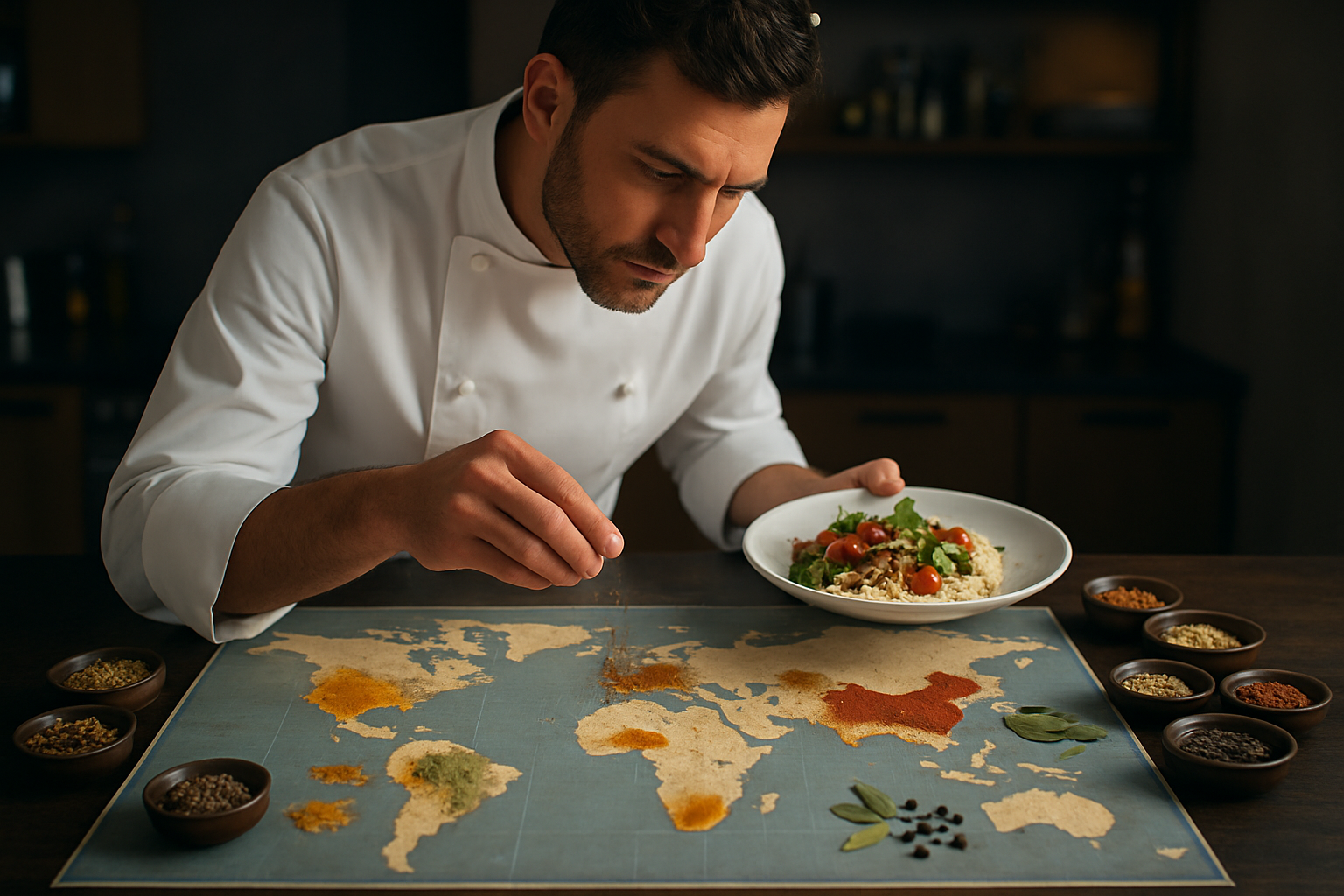Culinary Alchemy: Transforming Humble Ingredients into Gourmet Delights
Unlock the secrets of culinary alchemy and discover how to elevate everyday ingredients into extraordinary dishes. From simple pantry staples to forgotten vegetables, this article explores innovative techniques and creative pairings that will transform your cooking. Get ready to embark on a flavorful journey that proves gourmet cuisine is within everyone's reach.

Elevating Common Vegetables
Vegetables often play a supporting role in many dishes, but with the right techniques, they can become the stars of the plate. Take the humble carrot, for instance. Roasting whole carrots with a honey glaze and dusting of cumin can transform them into a sophisticated side dish. Or consider the often-maligned Brussels sprout. Shredded finely and quickly sautéed with pancetta and a splash of balsamic vinegar, they become a crispy, savory delight that even vegetable skeptics will love. Even the common potato can be elevated: try hasselback potatoes, where thin slices are cut almost all the way through, then roasted until crispy on the outside and creamy within. These techniques not only enhance flavor but also create visually stunning presentations that rival any high-end restaurant offering. By applying heat, seasoning, and thoughtful preparation, everyday vegetables can become the highlight of any meal.
Reimagining Pantry Staples
The pantry is a treasure trove of potential gourmet ingredients hiding in plain sight. Canned beans, often relegated to simple side dishes, can be transformed into luxurious dips or creamy pasta sauces. White beans blended with roasted garlic, lemon zest, and high-quality olive oil make a velvety spread that rivals any store-bought hummus. Rice, a staple in many households, can be elevated to new heights by toasting it before cooking and infusing the cooking liquid with aromatics like lemongrass or star anise. Even humble canned tomatoes can become the base for a rich, complex sauce when slowly simmered with a Parmesan rind and a splash of red wine. The key to reimagining pantry staples is to think beyond their traditional uses and consider how their flavors and textures can be enhanced or transformed. By combining these staples with fresh ingredients and unexpected seasonings, you can create dishes that are both comforting and exciting.
The Magic of Fermentation and Aging
Fermentation and aging are powerful tools in the culinary alchemist’s arsenal, capable of transforming simple ingredients into complex, flavorful delicacies. Homemade pickles, for example, can turn ordinary vegetables into tangy, crunchy accompaniments that elevate any dish. By experimenting with different vinegars, spices, and vegetables, you can create a range of pickles that add depth and interest to your meals. Aging can work similar magic on cheeses and cured meats. Even if you’re not ready to tackle cheesemaking at home, you can still participate in the aging process by properly storing and caring for high-quality cheeses, allowing them to develop more complex flavors over time. For the more adventurous, home-cured meats like duck prosciutto or beef jerky can be surprisingly easy to make and offer a gourmet touch to charcuterie boards or as garnishes for soups and salads. These techniques not only enhance flavor but also connect us to ancient culinary traditions that have been perfecting the art of transformation for centuries.
Presentation: The Final Touch
The final step in culinary alchemy is presentation, which can elevate a dish from delicious to truly memorable. Even the simplest meals can be transformed with thoughtful plating. Start by considering color contrast: a monochromatic dish can be brought to life with a sprinkle of fresh herbs or a drizzle of vibrantly colored sauce. Texture is equally important; consider adding a crunchy element like toasted nuts or crispy onions to contrast with softer components. The shape and size of the plate also play a role; choosing the right vessel can make a dish look more abundant or more refined. Don’t be afraid to play with height, creating visual interest by stacking components or using garnishes to add vertical elements. Remember that negative space on the plate can be just as important as the food itself, allowing each element to shine. By paying attention to these details, you can transform a home-cooked meal into a restaurant-worthy experience, delighting both the eyes and the palate.
Culinary Alchemy Tips & Tricks
-
Experiment with unexpected flavor pairings, like watermelon and feta or chocolate and chili.
-
Use high-quality salt and finish dishes with a sprinkle of flaky sea salt for added texture and flavor.
-
Invest in a good quality olive oil for finishing dishes and dressings.
-
Learn to make your own spice blends for unique flavor profiles.
-
Master the art of pan sauces to elevate simple proteins.
-
Explore different cooking methods like sous vide or smoking to add complexity to dishes.
-
Don’t underestimate the power of fresh herbs to brighten and enhance flavors.
-
Try infusing oils and vinegars with herbs and spices for instant gourmet touches.
-
Experiment with different textures in a dish for a more interesting eating experience.
-
Learn to properly season at every stage of cooking for layers of flavor.
Culinary alchemy is not just about following recipes or using expensive ingredients; it’s a mindset that sees potential in every component of a meal. By mastering techniques, understanding flavor combinations, and presenting dishes with care, anyone can transform simple ingredients into gourmet experiences. The key is to approach cooking with curiosity and creativity, always looking for new ways to elevate the ordinary. As you continue your culinary journey, remember that every meal is an opportunity to practice alchemy, turning the base metals of your pantry into culinary gold. Embrace the process, enjoy the experiments, and savor the delicious results of your kitchen wizardry.




